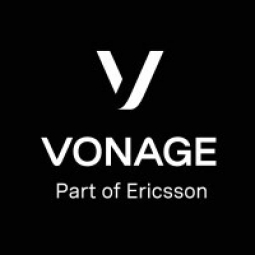Technology Category
- Platform as a Service (PaaS) - Application Development Platforms
- Sensors - Camera / Video Systems
Applicable Industries
- Cement
Services
- System Integration
About The Customer
Monjin is a company on a mission to organize the world’s talent by enabling experts and hiring professionals to meet talent virtually and deliver quality assessments. They aim to change the way companies around the world handle recruitment and hiring by leveraging WebRTC technology. Monjin's goal is to create a network of experts from various industries who would be paid to evaluate candidates and students on their basic skills, providing employers with access to a wide variety of pre-vetted profiles and recorded interviews. This innovative approach aims to solve the time-consuming challenge of discovering talent and the logistical costs associated with face-to-face interviews.
The Challenge
Monjin, a company aiming to revolutionize the recruitment process, sought to build a reliable, scalable video platform to facilitate candidate interviews and connect businesses with job-seeking talent. The goal was to create an online platform and a network of industry experts who would evaluate candidates and students on their basic skills, providing employers with access to a wide variety of pre-vetted profiles and recorded interviews. This solution aimed to address two critical problems in the hiring market: the time-consuming challenge of discovering talent, and the logistical costs associated with face-to-face interviews. To make this platform the best it could be, Monjin needed an API platform that could serve as the foundation for the video interactions - globally, at scale, and reliably. Furthermore, the platform needed to be user-friendly, requiring no software or application downloads from users, and comply with all relevant data privacy and information security laws and regulations.
The Solution
Monjin chose the Vonage Video API to integrate into their platform. This API provided a simple browser-based interface, eliminating the need for users to download any software or applications. It also complied with all relevant data privacy and information security laws and regulations, meeting specific requirements for talent acquisition. The Vonage Video API enabled Monjin to build an interview and talent assessment platform with customized features and functionality to stand out from the competition. More importantly, it was reliable enough to power millions of minutes of talent interviews globally, providing a solution that could scale up to the global level with ease and integrate directly within the existing application for a customized experience.
Operational Impact
Quantitative Benefit

Case Study missing?
Start adding your own!
Register with your work email and create a new case study profile for your business.
Related Case Studies.

Case Study
System 800xA at Indian Cement Plants
Chettinad Cement recognized that further efficiencies could be achieved in its cement manufacturing process. It looked to investing in comprehensive operational and control technologies to manage and derive productivity and energy efficiency gains from the assets on Line 2, their second plant in India.

Case Study
Digital Transformation of Atlanta Grout & Tile: An IoT Case Study
Atlanta Grout & Tile, a Tile, Stone & Grout restoration company based in Woodstock, Georgia, was facing challenges with its traditional business model. Despite steady growth over the years, the company was falling behind the web revolution and missing out on the opportunity to tap into a new consumer base. They were using independent software from different vendors for each of their department information and workforce management. This resulted in a lot of manual work on excel and the need to export/import data between different systems. This not only increased overhead costs but also slowed down their response to clients. The company also had to prepare numerous reports manually and lacked access to customer trends for effective business decision-making.

Case Study
Revolutionizing Construction Equipment Rental: A Case Study on ProsRent and ENO8
ProsRent, a startup that won the 'Best Financial Opportunity' and 'Best Pitch' at CodeLaunch 2016, aimed to revolutionize the way construction professionals source and rent heavy equipment. In the construction industry, project managers and contractors typically rent heavy equipment from supply companies. However, predicting inventory can be challenging, and finding the required equipment at the right time and place can be a hassle. If the preferred vendor doesn't have the required equipment, it results in wasted time and money in searching for it, often leading to higher costs due to non-preferred rates and increased delivery costs if the vendor is located far from the job site. Suppliers, on the other hand, desired access to a wider base of trusted renters that they didn't have to vet themselves and wanted to offer dynamic rental pricing based on demand and availability in their market. ProsRent's challenge was to produce a minimum viable product that was fast and first to market but also strong enough to engender loyalty and repeat business from the target market.

Case Study
AI-based Automation for Commercial Office HVAC: A Verdigris Case Study
Modern buildings are required to run longer hours, support a variety of end uses, and contribute to higher levels of economic productivity, leaving a thin margin for error. However, even the most advanced building and environmental control systems have failed to adequately support facilities and operations management. Buildings are often inefficient and the people using them are underserved. To meet occupant comfort and maintain cost and energy efficiency, a dynamic, AI-assisted approach is needed.

Case Study
Revamping EE's Legacy ERP: A Case Study on BT's Strategic Transformation
EE, even after its merger with BT, was operating its ERP estate on legacy infrastructure, hosted on the premises of a third-party supplier. This outdated system resulted in a volume-based operational model, higher time to market, longer delivery cycles, and unsatisfactory customer experience. BT recognized the need for a strategic transformation of these aging ERP systems and sought a partner who could proactively manage application services. The partner was also expected to handle development requirements associated with application management services, drive accountability, and ownership with a time and target-driven transformation of these services. BT's primary goals were to improve customer experience, reduce cycle time, and measure these improvements with precision.








